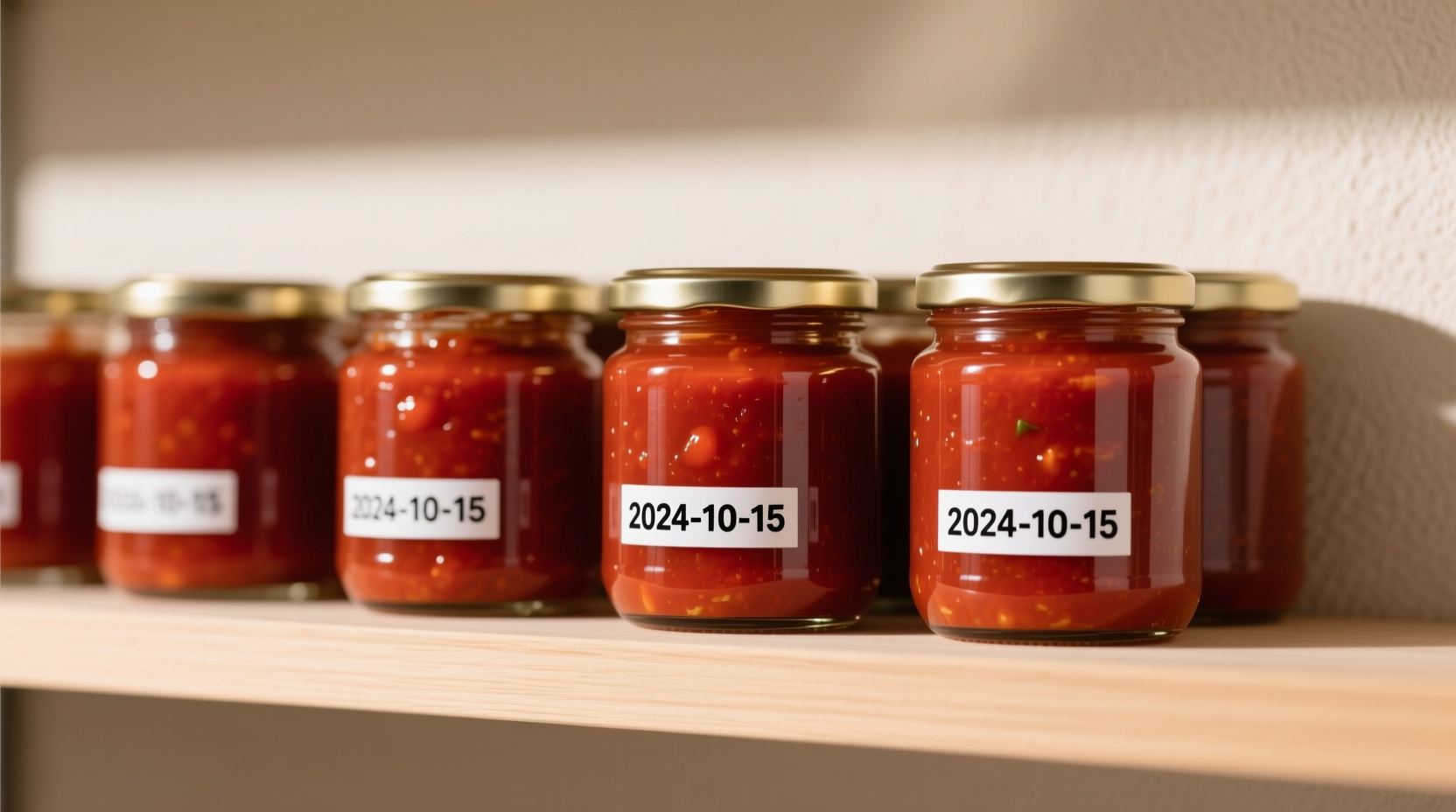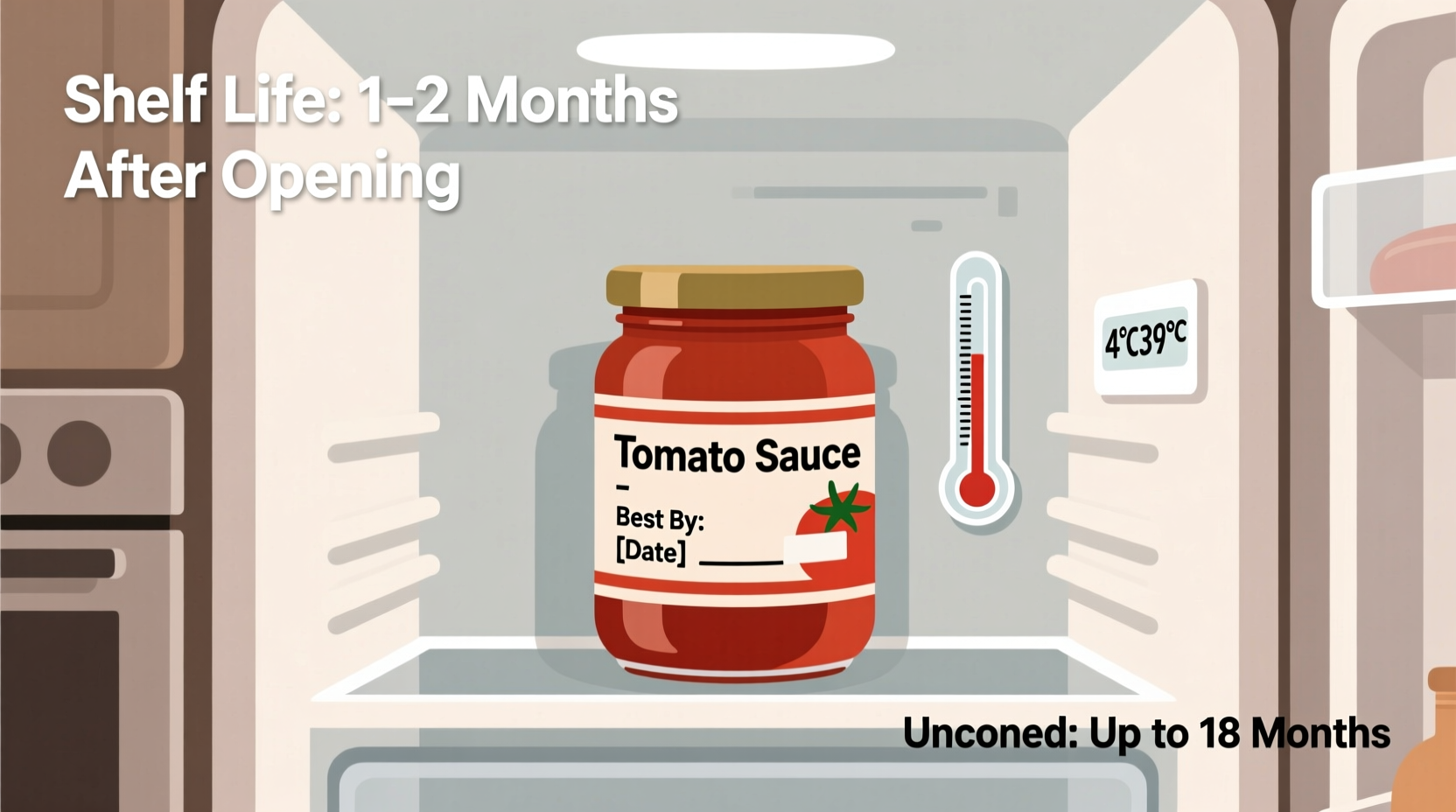Understanding Tomato Sauce Shelf Life: Your Complete Guide
Discovering that half-used jar of tomato sauce in the back of your fridge raises an immediate question: Is this still safe to eat? Proper food storage isn't just about avoiding waste—it's crucial for preventing foodborne illness. This guide delivers precise, science-backed information about tomato sauce refrigeration timelines, storage best practices, and clear spoilage indicators you can trust.
Why Tomato Sauce Shelf Life Varies: Key Factors Explained
Not all tomato sauces share the same refrigerator lifespan. Several critical factors determine how long your sauce remains safe and flavorful:
- Acidity level - Higher acidity (pH below 4.6) creates a less hospitable environment for bacteria
- Added ingredients - Cream, cheese, or meat significantly reduce shelf life
- Initial processing - Commercially canned vs. homemade preparation methods
- Storage temperature - Consistent refrigerator temperature below 40°F (4°C)
- Container type - Airtight containers prevent contamination and moisture loss
| Type of Tomato Sauce | Refrigerator Shelf Life | Freezer Shelf Life |
|---|---|---|
| Store-bought (unopened) | 12-18 months (pantry) | N/A |
| Store-bought (opened) | 7-10 days | 6-8 months |
| Homemade (basic) | 5-7 days | 4-6 months |
| Homemade (with meat/cream) | 3-4 days | 2-3 months |
This comparison reflects guidelines from the USDA Food Safety and Inspection Service, which monitors food storage safety standards across the United States.
Optimal Storage Techniques for Maximum Freshness
How you store tomato sauce directly impacts its safety and quality. Follow these evidence-based methods:
- Transfer immediately - Move sauce from original container to airtight glass or BPA-free plastic containers
- Minimize air exposure - Fill containers nearly to the top to reduce oxygen contact
- Label clearly - Note opening date with marker directly on container
- Store properly - Place in main refrigerator compartment (not door shelves where temperature fluctuates)
- Maintain temperature - Verify your refrigerator consistently stays at 40°F (4°C) or below using a standalone thermometer
Research from Kansas State University's National Center for Home Food Preservation confirms that proper container selection reduces spoilage by up to 40% compared to leaving sauce in original packaging.

Recognizing Spoilage: Beyond the Expiration Date
Expiration dates provide general guidance, but actual spoilage depends on multiple factors. Check for these definitive signs before using:
- Visual changes - Mold growth (any color), separation that doesn't reincorporate when stirred
- Texture alterations - Slimy consistency or unexpected thickening
- Odor indicators - Sour, fermented, or "off" smells beyond normal tomato acidity
- Taste test (last resort) - Only if other signs are absent; spit out immediately if flavor seems wrong
The FDA Food Code emphasizes that "when in doubt, throw it out" remains the safest approach for perishable foods like tomato sauce.
Extending Your Sauce's Lifespan: Freezing Techniques That Work
When you can't finish sauce within recommended timeframes, freezing preserves both safety and quality:
- Portion control - Freeze in 1-cup portions (ideal for most recipes) using ice cube trays first, then transfer to freezer bags
- Air removal - Squeeze excess air from freezer bags to prevent freezer burn
- Labeling - Include both freezing date and sauce type (e.g., "basic tomato, 08/15/2023")
- Thawing method - Transfer to refrigerator 24 hours before use for best texture retention
According to Oregon State University Extension Service, properly frozen tomato sauce maintains optimal quality for 6-8 months, though remains safe indefinitely at 0°F (-18°C).
Special Considerations for Different Sauce Types
Not all tomato-based products follow the same rules. Pay special attention to these variations:
- Marinara vs. Arrabbiata - Spicy versions with added garlic may spoil slightly faster due to increased moisture content
- Cream-based sauces - Alfredo or pink sauces containing dairy require consumption within 3-4 days
- Meat-containing sauces - Bolognese or meat sauces should be eaten within 3-4 days due to additional protein sources
- Low-sodium varieties - May have shorter shelf life as salt acts as a natural preservative
Food scientists at the Cornell University College of Agriculture and Life Sciences note that each additional ingredient introduces new variables affecting microbial growth rates.
Common Misconceptions About Tomato Sauce Storage
Several persistent myths could compromise your food safety:
- "The sniff test is reliable" - Many dangerous bacteria don't produce noticeable odors
- "Sugar preserves indefinitely" - While sugar helps, it doesn't eliminate bacterial growth in refrigerated conditions
- "All tomato products are highly acidic" - Some specialty sauces have pH levels above the safe threshold of 4.6
- "Refrigerator temperature is always safe" - Door shelves and vegetable drawers often run warmer than main compartments
These misconceptions were documented in a CDC survey on food safety knowledge gaps, highlighting why evidence-based guidelines matter.
When to Discard Tomato Sauce Immediately
Certain situations require immediate disposal regardless of timeframe:
- Container shows signs of bulging or leakage
- Sauce was left at room temperature for more than 2 hours (1 hour if above 90°F/32°C)
- Visible mold appears anywhere in the container
- Unusual bubbling or fizzing when opened
- Container was previously frozen and shows ice crystals or discoloration
The USDA's FoodKeeper app provides real-time storage recommendations based on specific product details and storage conditions.
Practical Tips for Reducing Food Waste Without Compromising Safety
Balance safety with sustainability using these professional techniques:
- Freeze small portions for single servings
- Use nearing-expiration sauce in soups or stews (heating to 165°F/74°C kills most bacteria)
- Transform slightly aged sauce into pizza sauce (higher heat application during cooking)
- Share excess with neighbors through community food-sharing programs
These methods align with recommendations from the USDA Food Waste Reduction Alliance, which promotes safe food utilization practices.











 浙公网安备
33010002000092号
浙公网安备
33010002000092号 浙B2-20120091-4
浙B2-20120091-4